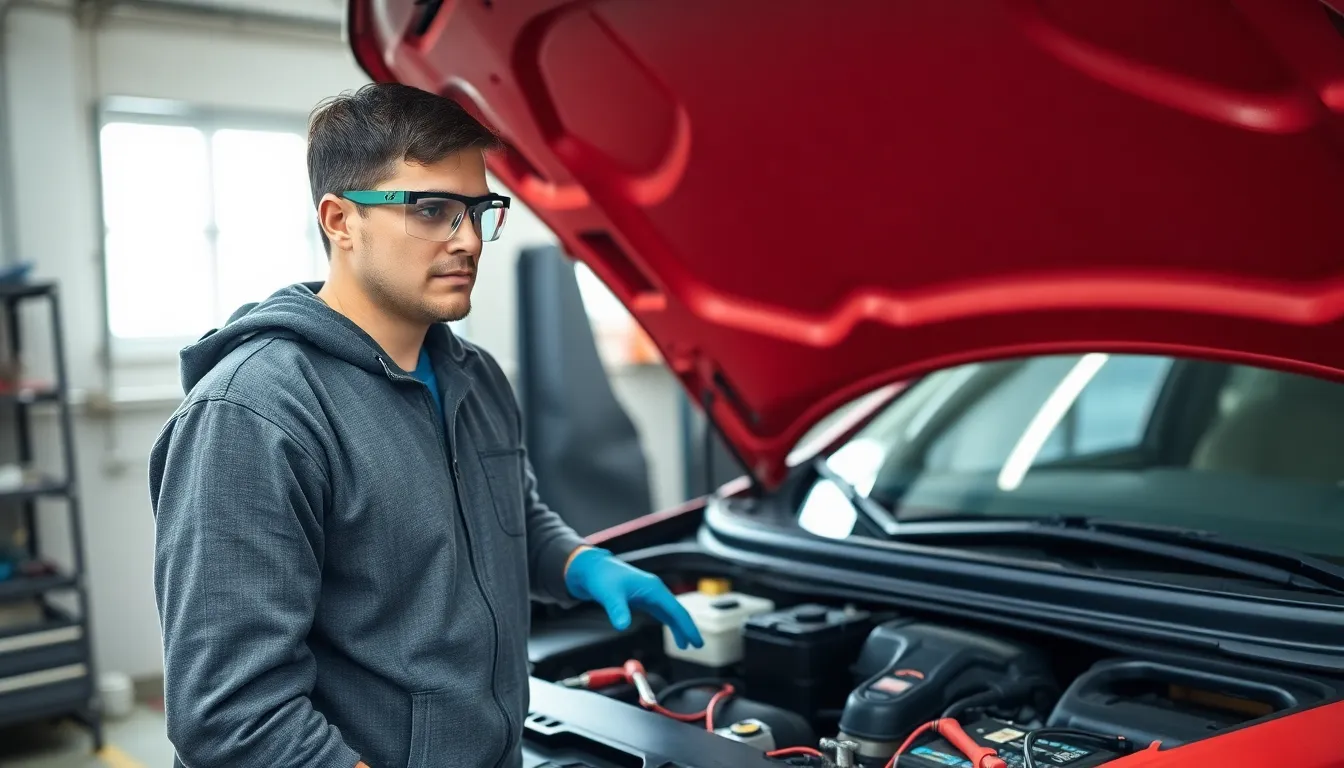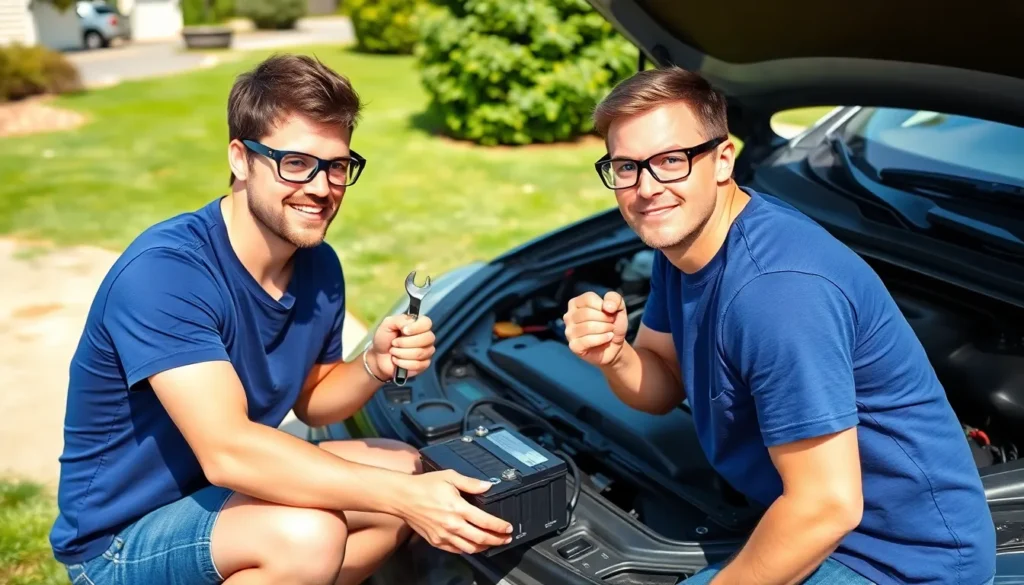Table of Contents
ToggleNothing’s worse than turning the key in your car and hearing that dreaded click instead of a vroom. It’s like your car’s way of saying, “I need a nap.” But fear not! Changing a car battery at home is easier than finding a parking spot at the mall during the holidays. With just a few simple tools and a dash of determination, anyone can tackle this task without needing to summon a mechanic or break the bank.
Tools Needed For Changing A Car Battery
Changing a car battery requires specific tools for a successful and safe process. Familiarizing with these tools enhances efficiency during the task.
Basic Tools
Wrenches and socket sets come first for removing the battery terminals. A flathead screwdriver assists with prying up battery clamps. A ratchet and extension allow for easier access in tight spaces. A battery terminal cleaner ensures clean connections, promoting battery efficiency. Finally, a torque wrench helps tighten bolts to manufacturer specifications, preventing damage.
Safety Equipment
Safety goggles protect eyes from acid splashes or debris. Heavy-duty gloves guard against battery acid and sharp components. An apron offers additional protection from spills while working. A fire extinguisher rated for electrical fires stands ready for emergencies. A first aid kit should also be nearby in case of minor injuries.
Steps To Change A Car Battery At Home

Changing a car battery at home involves several clear steps. Follow these instructions for a successful process.
Preparing Your Vehicle
Start by ensuring a safe work environment. Turn off the car and remove the keys from the ignition. Pop the hood and secure it with a prop rod to prevent it from closing unexpectedly. Next, locate the battery, usually positioned near the front of the engine bay. Clear any obstructions, such as loose wires or debris, to gain easy access. Wearing appropriate safety gear, including goggles and gloves, is crucial for protection against potential hazards.
Removing The Old Battery
Begin the removal process by disconnecting the negative terminal first. Loosen the bolt on the negative terminal using a wrench and wiggle the connector off. After that, repeat the same for the positive terminal. Secure the battery cables away from the battery terminals. Remove any hold-down clamp or bracket that secures the battery in place. Lift the old battery carefully, as it can be heavy, and place it on a stable surface. Be cautious about spills, as batteries contain acid.
Installing The New Battery
Position the new battery in the battery tray aligned with the terminals. Connect the positive terminal first by placing the connector onto the positive post and tightening the bolt securely. Next, attach the negative terminal in the same manner. Ensure both connections are tight and secure to prevent issues while driving. If applicable, replace any hold-down clamps to keep the battery stable. Verify that cables are not pinched or overly stretched to avoid future damage.
Testing The New Battery
Testing the new battery is vital for confirming proper installation. Start the vehicle to ensure it turns over smoothly. Observe dashboard indicators for any warning lights. Additionally, check the connections for any signs of corrosion or looseness. If the engine starts without issues, the new battery installation was successful. Consider using a multimeter to check the battery voltage if desired. Proper voltage should typically range between 12.4 to 12.7 volts when the vehicle is off.
Common Mistakes To Avoid
Avoiding common mistakes can make changing a car battery at home smoother and safer. Here are key pitfalls to watch for during the process.
Ignoring Safety Precautions
Safety precautions ensure a secure environment when changing a car battery. Always wear safety goggles and heavy-duty gloves to protect against acid spills or sparks. Disconnecting the negative terminal first prevents accidental short-circuits. An apron protects clothing while handling tools. Keep a fire extinguisher rated for electrical fires nearby. Failing to prioritize these safety measures can result in injuries or damage.
Not Securing The Battery Properly
Properly securing the battery prevents future issues. Using the included hold-down brace ensures the battery stays in place during vehicle movement. Not securing the battery can lead to vibrations that loosen connections, which might cause starting problems. Check that the battery terminals are tight and properly connected after installation. Loose connections can lead to electrical failures or intermittent starting.
Disposing Of The Old Battery Incorrectly
Disposing of the old battery requires careful consideration. Car batteries contain hazardous materials, making it important to avoid throwing them in regular trash. Local auto parts stores or recycling centers often accept used batteries for proper disposal. Some places may even offer a small credit for returning batteries. Taking these steps ensures environmental protection and responsible handling of hazardous materials.
Changing a car battery at home is not only achievable but also a rewarding experience. With the right tools and safety precautions in place anyone can tackle this task confidently. By following the outlined steps and avoiding common mistakes the process becomes efficient and safe.
Properly securing the new battery and ensuring responsible disposal of the old one are crucial steps that shouldn’t be overlooked. With these tips in mind drivers can save money and gain a sense of accomplishment. Embracing DIY car maintenance empowers individuals to take control of their vehicle’s performance and reliability.







